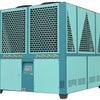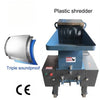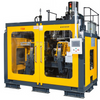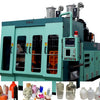Roadblock Technology and Market Trends: Innovations, Applications, and Future Directions Abstract

1. Introduction
Roadblocks (or barricades) are physical or automated barriers designed to control vehicle and pedestrian movement. Historically used for military or emergency purposes, modern roadblocks now play a pivotal role in urban traffic management, public safety, and security infrastructure. With the global roadblock market projected to grow at a compound annual rate of 15% (reaching $140 billion by 2030), understanding their technological evolution and market dynamics is essential.
2. Market Overview and Key Drivers
2.1 Market Growth and Demand
The roadblock industry has experienced rapid expansion, driven by:
- Urbanization: Increased demand for traffic control in cities (e.g., smart parking systems, pedestrian zones).
- Government Policies: Regulations mandating road safety measures (e.g., mandatory installation of barriers near schools and hospitals).
- Security Concerns: Rising threats of terrorism and unauthorized vehicle access to sensitive areas (e.g., embassies, airports).
According to the 2025 market report, China’s roadblock market alone exceeds $10 billion, with electric and intelligent barriers accounting for 40% of sales. High-growth sectors include airports, logistics hubs, and event management.
2.2 Competitive Landscape
The market is fragmented, with large manufacturers (e.g., companies producing hydraulic roadblocks) competing against smaller firms offering cost-effective portable barriers. Key differentiators include product durability, smart features (e.g., remote control), and compliance with international standards (e.g., ISO, IP67 waterproof ratings).
3. Technological Innovations
3.1 Types of Roadblocks
-
Fixed Barriers:
- Concrete/Metal Barriers: Used in permanent installations (e.g., highway medians).
- Advantages: High durability; disadvantages include immobility and high installation costs.
-
Movable/Retractable Roadblocks:
- Hydraulic Systems: Rapid deployment (4–6 seconds per cycle) and high impact resistance (e.g., 1000-ton force capacity for anti-terrorist barriers).
- Smart Features: Integration with LED warnings, AI-based license plate recognition, and IoT-enabled remote control.
-
Portable Roadblocks:
- Examples: Traffic cones, retractable spike strips (e.g., model KG-953 with 7m adjustable length and 50m remote control range).
- Applications: Temporary traffic control during construction or emergencies.
3.2 Advanced Technologies
-
AI and IoT Integration:
Smart roadblocks now use AI for real-time threat detection (e.g., identifying unauthorized vehicles via camera feeds) and IoT for centralized monitoring. - Energy Efficiency: Solar-powered barriers and low-power hydraulic systems reduce operational costs.
- Material Innovations: Use of high-strength steel, reinforced polymers, and recyclable materials to enhance durability and sustainability.
4. Applications Across Industries
4.1 Transportation and Urban Planning
- Highways: Over 150,000 km of Chinese highways utilize barriers to reduce accident rates by 30%.
- Smart Cities: Retractable barriers in pedestrian zones adapt to peak-hour traffic demands.
4.2 Security and Defense
- High-Security Zones: Retractable spike strips (e.g., BS-KLZZ3300 model) prevent vehicle breaches at embassies and banks.
- Military Use: Portable barriers for rapid deployment in conflict zones.
4.3 Event and Crowd Management
- Concerts and Sports Events: Modular barriers ensure crowd control and emergency evacuation efficiency.
4.4 Health and Crisis Response
- Pandemic Control: Barriers enforced social distancing at hospitals and testing centers during the 2020–2025 health crises.
5. Challenges and Future Trends
5.1 Key Challenges
- Regulatory Compliance: Unauthorized roadblocks may violate public rights, requiring strict legal frameworks.
- Cost Constraints: High upfront costs for intelligent systems (e.g., AI-integrated barriers).
5.2 Emerging Trends
-
Smart Integration:
- AI-driven image recognition for real-time vehicle classification (e.g., VIP vs. regular vehicles).
- Integration with smart city ecosystems (e.g.,联动 with traffic lights and surveillance cameras).
-
Automation:
- Self-deploying barriers triggered by sensors (e.g., detecting speeding vehicles).
-
Sustainability:
- Biodegradable materials for temporary barriers.
- Recyclable components and energy-efficient manufacturing processes.
-
Customization:
- Modular designs tailored to specific client needs (e.g., branding for corporate events).
6. Conclusion
Roadblocks have transitioned from simple physical barriers to sophisticated, intelligent systems integral to modern infrastructure. As urbanization and security demands escalate, the industry must prioritize innovation in AI, sustainability, and user-centric design. Future research should focus on reducing costs for smart systems and ensuring global regulatory harmonization to maximize their societal impact.





